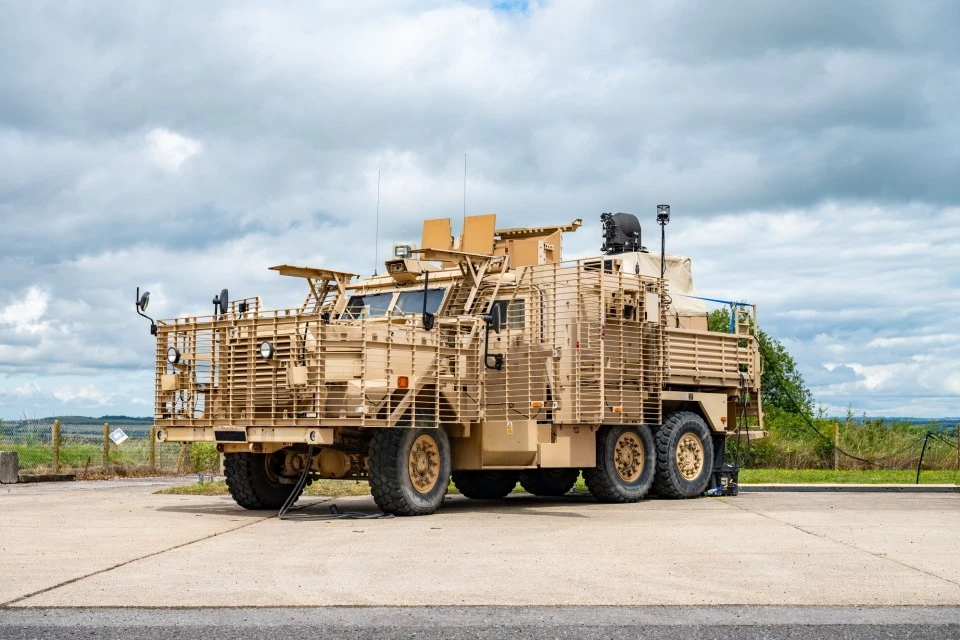In another step toward practical battlefield energy weapons, the UK has for the first time tested a laser weapon mounted on a British Army Wolfhound armored vehicle as part of the Land Laser Directed Energy Weapon (LDEW) Demonstrator program.
Ever since they were invented in the 1960s, lasers have been seen as a potentially game-changing weapon. At first, it makes perfect sense. Lasers can cut through steel. They move at the speed of light. They can engage multiple targets instantly. The rounds are potentially infinite and cost surprisingly little.
The problem has been figuring out how to move lasers off the workbench and onto the battlefield. A practical laser weapon has to be powerful enough to significantly damage a target. It needs to be able to lock onto targets long enough to complete the job. The system needs to be able to adjust the beam so it remains focused and can compensate for atmospheric distortion, fog, dust, and other factors. It also needs to be portable, robust, and compact.

With the development of solid-state lasers and beam combiners that can turn several lasers into one coherent beam, such a weapon system is becoming increasingly practical to the point where the question isn't so much how to create a laser weapon as how to mount it on conventional military platforms and integrate them into battle plans.
Conducted by Raytheon UK, Defence Science and Technology Laboratory (Dstl), and Defence Equipment and Support (DE&S), the recent tests by the British Ministry of Defence were conducted on Dstl's range at Porton Down in Wiltshire. Raytheon's High-Energy Laser Weapon System (HELWS) was mounted on a Wolfhound and used to engage flying targets at a range of up to 3,300 ft (1,000 m).
In addition to Wolfhound, the HELWS can be installed on many different platforms as needed. It also works with a standard command and control system and can be integrated with conventional battle management radar and surveillance systems.

According to Raytheon, HELWS has already been cleared for combat duty with US armed forces and is designed to defeat NATO class 1 drones.
The next stage in the LDEW program is to familiarize British Army units with the new laser weapon to find out how to best employ it.
"We have proven that the Raytheon high energy laser weapon system can track and engage targets whilst mounted on a vehicle," said James Gray, chief executive and managing director of Raytheon UK. "The speed at which this capability was delivered is only possible due to the hard work of our British SME partners, coupled with the operationally proven technology developed by Raytheon.
"In successfully firing the first laser weapon integrated on a land vehicle in the UK, Dstl has proven that the Raytheon high energy laser weapon system can track, engage and defeat targets whilst mounted on a vehicle. We now look forward to the British Army experimenting with the weapon over the coming months and proving that the technology is battlefield ready."
Source: Raytheon





